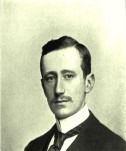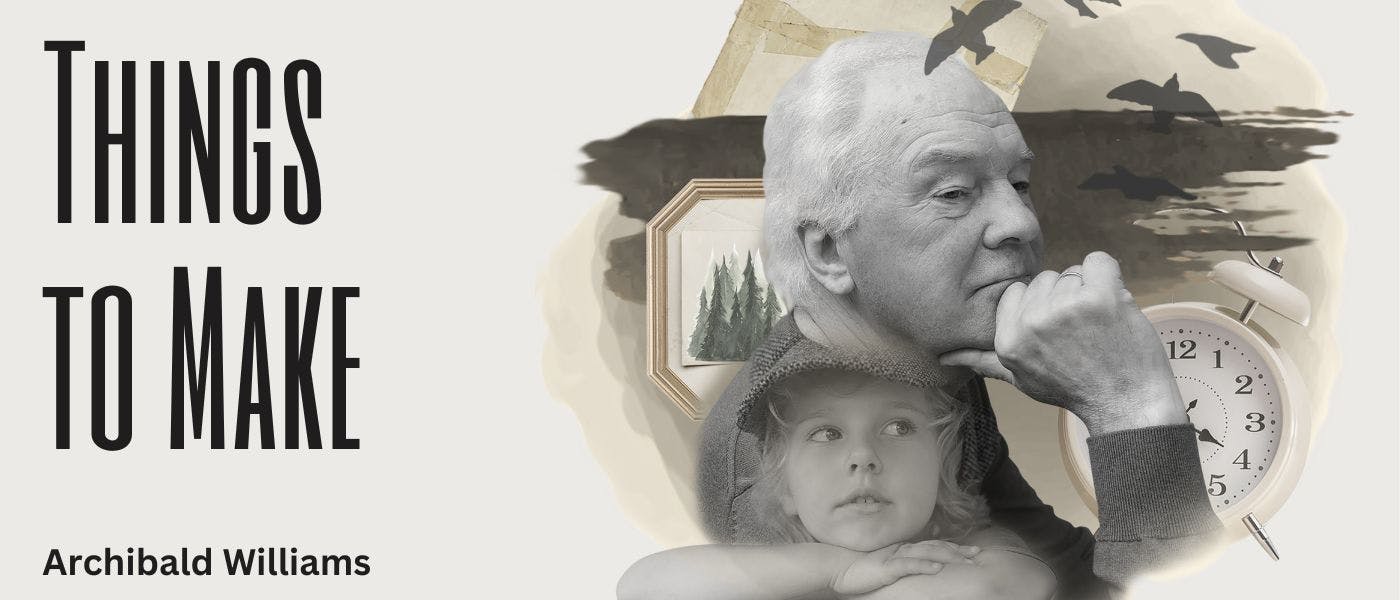Things To Make by Archibald Williams is part of the HackerNoon Books Series. You can jump to any chapter in this book here. A SIGNALLING LAMP
XXXVII. A SIGNALLING LAMP.
Visual signalling is effected at night in the Morse code by means of a lamp fitted with an easily-moved shutter, which passes or cuts off the light at the will of the operator. Readers who know the Morse code might well go to the trouble of constructing in duplicate the simple apparatus to be described, as the possession of an outfit will enable them to extend their signalling capabilities.
The stand for the lamp is admirably supplied by the ordinary camera tripod.
For the illuminant we may select any good acetylene cycle lamp.
For this a holder is made of 1/2-inch wood, according to the sketch shown in Fig. 189. The width of all the four parts should be about 2 inches greater than the front glass of the lamp. B and C should be sufficiently far apart to allow the lamp to rest on the rim above the carbide chamber; and the front, A, should be at least an inch higher than the top of the lamp glass.
[Illustration: FIG. 189.—Signalling lamp with quick-moving shutter.]
The hole cut in B must be so situated as to bring the front of the lamp close to the front of the holder, so that the greatest possible amount of light may be utilized. The hole in A should be rather larger than the lamp front, and, of course, be accurately centred. Mark these two holes off carefully, and cut out with a pad saw or fret saw.
A socket must be attached to the centre of the underside of the base to take the camera screw; or, if such a socket is not easily obtainable, a hole should be drilled in the base to take an ordinary wood screw of good size, the surplus of which is cut off so as not to interfere with the lamp.
The Shutter.—The woodwork is so simple that nothing further need be said about it. The more difficult part of the business is the making of the shutter, which must be so constructed that it can be opened and closed rapidly by motions similar to those used in working the telegraph key described in a preceding chapter. Speed of working is obtained by dividing the shutter into two or three parts, each revolving on its own spindle, but all connected so as to act in perfect unison. The thinnest sheet brass or iron obtainable should be used, so that the tension of the spring used to close the shutter need not be great. Our illustration shows a two-part shutter, each half an inch wider than the hole in the front, and jointly a similar amount deeper. The upper half overlaps the lower, outside, by a quarter of an inch.
The spindles are two straight pieces of brass wire, revolving in sockets which are most easily made of notched pieces of wood (as shown in Fig. 189), with removable caps of strip tin. The lower spindle should be an inch longer than the width of the front, to allow for a cranked end, to which the closing spring will be attached.
Having cut out the halves of the shutter, solder the spindle wires to one edge of each on what will be the back side. The wires must be so arranged as to allow a quarter of an inch to project beyond the left edge of the front, as the opening mechanism is situated on this side as the most convenient for the operator.
Take a couple of metal discs, an inch or so in diameter, and bore a hole in each near the circumference to fit the ends of the pivots fairly tight. Three-eighths of an inch from this—centre to centre—bore and tap a hole for a small screw. The tapping should be done with a taper tap and carried just so far that the screw turns stiffly without danger of being broken off by the screw-driver.
Next find the correct positions of the parts of the shutter and the spindle sockets on the front of the holder, and mark them off carefully. Screw the wooden parts of the sockets to the front. Four little “distance pieces” should now be cut out of small tubing, or made by twisting tin round the spindle, to place on the spindles between shutter and sockets, so that the shutters cannot shift sideways.
The right-hand end of the lower spindle must be bent over (after slipping on the distance piece) to form a 1/2-inch crank making an angle of 45 degrees with the line of the front, in an upward direction, as it will be depressed by the opening of the shutter. Flatten out the end with a hammer, and drill a small hole near the tip.
The shutters can now be placed in position, and the caps of the sockets be screwed on. The next thing to make is the connecting rod to join the cranks at the left side of the front. For this purpose we may use a piece of fairly stiff strip metal—brass by preference—5 or 6 inches long. Half an inch from one end make a mark with the centre punch; then measure off exactly the distance between the shutter spindles, and make a second punch mark. Drill holes at the marks large enough, for the disc screws to pass through easily, but not loosely.
Attach the rod to the discs by the screws, and slip the discs on to the ends of the shutter spindles. (The free end of the rod should be upwards.) Press the shutters against the front so that they cannot open, adjust the discs at an angle of 45 degrees to the front in an upward direction, and solder them firmly to the spindles.
The upper end of the connecting rod should be turned over to form a finger rest, or be sharpened off to take a knob. The last operation is the fitting of the spring to close the shutter. A spiral spring attached at one end of the crank on the lower spindle and at the other to a nail projecting from the side of the front is the most convenient arrangement. If you have not got a spiral spring, you can easily make a. fairly efficient substitute out of hard brass wire wound a few times round a large wire nail.
An alternative method of springing is to add an arm, a, to the connecting rod, as shown by dotted lines in Fig. 189, and to use the projection for engaging a spring, made by winding hard brass wire a few times round a nail. A screw passed through the coil holds it to the front.
The tension of the spring must be just sufficient to close the shutter smartly and prevent it rebounding far enough to pass any light.
About HackerNoon Book Series: We bring you the most important technical, scientific, and insightful public domain books.
This book is part of the public domain. Archibald Williams (2005). Things To Make. Urbana, Illinois: Project Gutenberg. Retrieved https://www.gutenberg.org/cache/epub/14664/pg14664-images.html
This eBook is for the use of anyone anywhere at no cost and with almost no restrictions whatsoever. You may copy it, give it away or re-use it under the terms of the Project Gutenberg License included with this eBook or online at www.gutenberg.org, located at https://www.gutenberg.org/policy/license.html.

